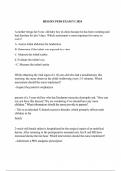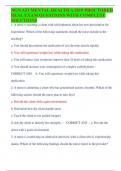Samenvatting
Summary General Economics Stenden International Hospitality Management Sloman Essentials of Economics
- Instelling
- NHL Stenden Hogeschool (NHL)
Summary of the chapters 2,3,5, which are needed for the test of General Economics at Stenden.
[Meer zien]













